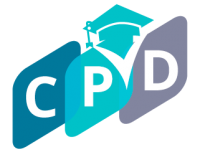Introduction:
Flashcards are a versatile and powerful tool that can enhance the learning process through active engagement and retrieval practice. Whether you’re studying for exams, learning a new language, or reinforcing key concepts, using flashcards strategically can significantly impact your retention and understanding. In this article, we’ll explore tips for creating and using flashcards effectively to maximize their benefits in your learning journey.
- Create Clear and Concise Flashcards: When creating flashcards, keep the content clear and concise. Each flashcard should focus on a single concept, fact, or question. Use keywords, phrases, or brief sentences to convey information. This clarity ensures that your flashcards are effective tools for quick recall and reinforcement.
- Utilize Both Sides of the Flashcard: Take advantage of both sides of the flashcard to present information. On one side, pose a question or provide a prompt, and on the other side, provide the answer or relevant details. This dual-sided approach encourages active engagement and self-assessment, promoting effective retrieval practice.
- Incorporate Visual Elements: Integrate visual elements such as diagrams, charts, or images into your flashcards, especially for subjects that involve visual learning. Visual cues enhance memory retention and make the learning process more engaging. The combination of text and visuals reinforces the connections between concepts.
- Organize Flashcards by Topics or Themes: Organize your flashcards by topics or themes to create a structured learning experience. Grouping related concepts together helps you see the connections between ideas and reinforces the broader context of your study material. This organization aids in more comprehensive learning and understanding.
- Mix Different Types of Information: Avoid creating flashcards that only focus on one type of information. Mix different types, such as definitions, examples, and problem-solving scenarios, to challenge your brain and promote varied retrieval practice. This approach ensures that you develop a holistic understanding of the subject matter.
- Add Context to Flashcards: Provide context on your flashcards to enhance understanding. Instead of isolated facts, include information about how a concept is applied in real-life situations or its relevance within a broader framework. Adding context aids in connecting abstract concepts to practical scenarios, fostering a deeper comprehension.
- Review Regularly Using Spaced Repetition: Implement spaced repetition as part of your flashcard review strategy. Spaced repetition involves reviewing flashcards at increasing intervals over time. Apps like Anki, Quizlet, or other spaced repetition tools can automate this process. Regular, spaced reviews optimize memory retention and support long-term learning.
- Quiz Yourself Using Flashcards: Turn your flashcard sessions into self-quizzes. Actively recall the information before flipping the card to check your answer. This retrieval practice strengthens memory recall pathways and reinforces your understanding of the material. Quiz-style engagement transforms flashcards into dynamic learning tools.
- Introduce Active Recall Techniques: Engage in active recall by covering the answers while reviewing prompts or questions. Attempt to recall the information from memory before checking the answer. This technique enhances retrieval practice and solidifies the connections between concepts, making your learning more robust.
- Create Interactive Flashcards for Digital Learning: If you prefer digital learning, explore interactive flashcard platforms that allow you to add multimedia elements, audio, and interactive features. Platforms like Quizlet or Cram enable dynamic and engaging flashcard creation, enhancing the online learning experience.
- Personalize Flashcards with Mnemonics or Acronyms: Personalize your flashcards by incorporating mnemonics or acronyms. Mnemonics are memory aids that use associations or patterns to remember information. Creating memorable phrases or acronyms for complex concepts can make the learning process more enjoyable and effective.
- Review Mistakes and Weak Points: Pay special attention to flashcards where you make mistakes or find difficulty in recall. Reviewing these weak points helps identify areas that require additional focus and reinforcement. Targeted review of challenging flashcards contributes to a more comprehensive understanding of the material.
- Share Flashcards with Peers: Collaborate with peers by sharing your flashcards or creating flashcard decks together. Discussing concepts, explaining answers, and exchanging insights with others enriches the learning experience. Peer collaboration introduces diverse perspectives and reinforces your understanding through teaching.
- Set Timed Flashcard Sessions: Introduce a timed element to your flashcard sessions to enhance focus and efficiency. Set specific time intervals for reviewing a set of flashcards, creating a sense of urgency. Timed sessions help prevent procrastination and maintain an active, goal-oriented learning pace.
- Celebrate Progress and Achievement: Celebrate your progress as you master each set of flashcards. Acknowledge achievements, no matter how small, to maintain motivation and a positive attitude toward your learning journey. The sense of accomplishment contributes to a positive feedback loop, encouraging continued engagement with flashcards.
Conclusion:
Effectively using flashcards involves more than rote memorization; it’s about creating an interactive and engaging learning experience. By adopting clear, organized, and varied approaches to flashcards, you can transform them into powerful tools for active recall, retrieval practice, and conceptual understanding. Whether you prefer traditional physical flashcards or digital platforms, the key lies in incorporating strategies that align with your learning preferences and goals. Flashcards, when used effectively, become dynamic companions in your educational journey, facilitating a deeper and more enduring understanding of the material.
